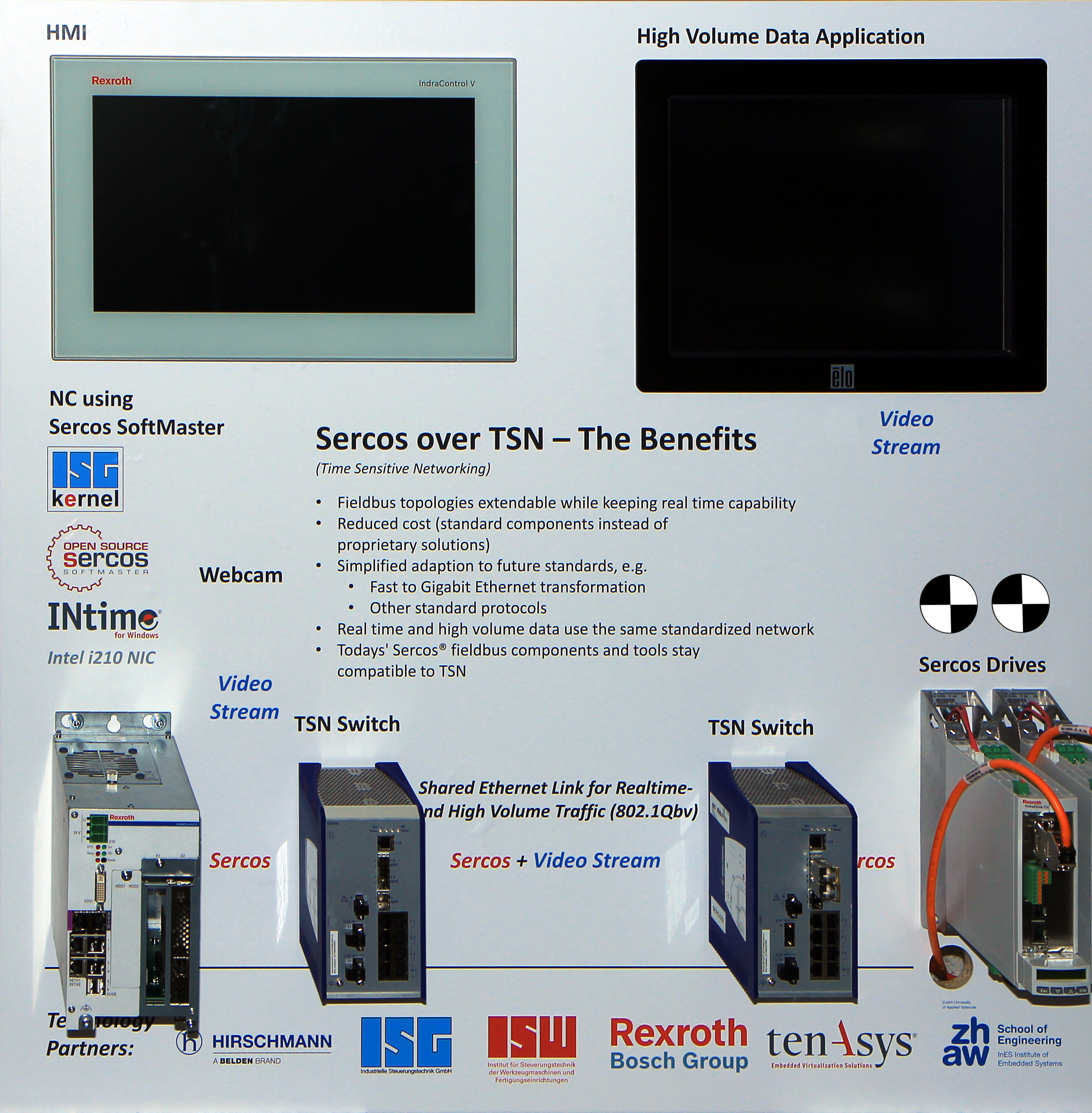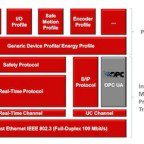Sercos International, provider of the Sercos automation bus, will demonstrate for the first time the transmission of the Sercos III real-time protocol via Ethernet standard IEEE 802.1 TSN (Time-Sensitive Networks) at the 2016 SPS IPC Drives show.
The Sercos TSN Demonstrator was created by the Institute for Control Engineering of Machine Tools and Manufacturing Units (ISW, University of Stuttgart) with support of several industry partners. It shows a real-time and multiprotocol-capable network infrastructure based on TSN for automation technology. More after the jump.

The demonstrator involves a TSN-based Sercos III SoftMaster with a Soft CNC from Industrielle Steuerungstechnik GmbH (ISG), which communicates with Sercos III servo drives from Bosch Rexroth via Hirschmann Automation TSN switches.
Through this TSN network infrastructure, video streams of a webcam are transmitted to a remote display in parallel with the servo communication, without impairing the characteristics and functionality of the Sercos real-time communication.
“The Sercos TSN demonstrator provides practical proof that Sercos III devices can be integrated into a TSN network as they are and can communicate with one another via TSN. Neither functionality nor real-time characteristics are restricted. Furthermore, existing tools, such as the Sercos Monitor as a diagnostic and analysis tool, can continue to be fully used,” says Peter Zahn, project manager for the Sercos TSN demonstrator at the University of Stuttgart’s ISW.
Dr. Oliver Kleineberg, head of the Advance Development unit of Hirschmann Automation & Control adds:
“The implementation of TSN into products requires a solid technical platform for time synchronization. Hirschmann RSP35 switches with its FPGAs and its comprehensive support of the IEEE 1588 protocol are the ideal media for a prototypical development which will presumably extend to series production. We expect first results of our TSN development work in 2017. This short time frame and our optimism are based on the already high stability of TSN prototypes and the development successes: A focused and efficient development is already possible based on IEEE TSN standards.”
Peter Lutz, Managing Director of Sercos International, adds that Sercos TSN demonstrator impressively demonstrates that Ethernet TSN enables the convergence of traditional real-time Ethernet solutions to a unified, standardized and consistent network infrastructure. Sercos technology benefits from TSN in several ways.
On the one hand, standard Ethernet components with integrated real-time capability can be used and flexible network topologies can be realized. On the other hand, with Ethernet TSN, higher transmission bandwidths are also available.
For more information, read the latest SERCOS eNewsletter or visit sercos.org.
Sercos International is an association of users and manufacturers that is in charge of technical development, standardization, certification and marketing for the Sercos automation bus. Conformance tests guarantee that Sercos implementations are standard-compliant ensuring that devices from different manufacturers can be combined. Based in Germany, the organization presently has more than 90 member companies located around the world and has national liaison offices in North America and Asia.
Ethernet TSN comprises a series of IEEE 802 sub standards, that are currently elaborated by the IEEE TSN working group and that will most probably be released until 2017. The new standards include, amongst others, time-triggered data transmission (IEEE 802.1Qbv Scheduling), bandwidth reservation (IEEE 802.1Qcc Stream Reservation), as well as measures to interrupt non-time-critical data streams (IEEE 802.1Qbu Frame Preemption). Thus, a completely deterministic communication within the IEEE 802 standard is possible. At the same time additional protocols (streams) may be transmitted over the same medium without affecting the real-time characteristic of the network.
The SErial Realtime COmmunication System, or Sercos, is one of the world’s leading digital interfaces for communication between controls, drives and decentralized peripheral devices. Sercos has been used in machine engineering for approximately 25 years and is implemented in over 5 million real-time nodes. With its open, manufacturer-independent Ethernet-based architecture, Sercos III is a universal bus for all automation solutions.







Leave a Reply
You must be logged in to post a comment.